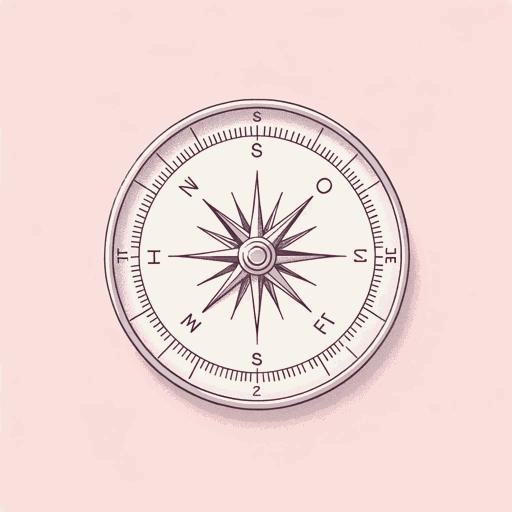37 pages • 1 hour read
Mark MansonThe Subtle Art of Not Giving a F*CK: A Counterintuitive Approach to Living a Good Life
Nonfiction | Book | Adult | Published in 2016A modern alternative to SparkNotes and CliffsNotes, SuperSummary offers high-quality Study Guides with detailed chapter summaries and analysis of major themes, characters, and more.
Summary and Study Guide
Overview
The Subtle Art of Not Giving a F*ck is a 2016 self-help book by American author and blogger Mark Manson. The book, which appeared on the New York Times bestseller list, takes an unconventional look at the way our responses to life’s struggles shape how we live. The crude and brash title paves the way for a blunt, sometimes expletive-laced tone that deftly manages to address life’s deepest and most primary concerns: death, suffering, and the pursuit of happiness.
The philosophy that Manson presents in the book centers on accepting universal truths. One of these truths is that suffering is inevitable, and another is that that no matter what one might think, at some point one will be wrong about something. Unwillingness to accept these truths though resistance or avoidance leads people away from real happiness and toward the superficial representation of it. Manson counterintuitively reframes many conventional outlooks on life’s challenges. Borrowing from multiple philosophies, such as Stoicism and Buddhism, and from specific historical figures, such as Charles Bukowski, Alan Watts, Ernest Becker, and The Buddha, Manson fuses ideas together to create a worldview that advocates empowerment through acceptance.
This guide uses the Kindle Edition published in 2016.
Summary
The book includes nine chapters, and some of their titles strike an in-your-face tone. For example, Chapters 2 and 3 are titled “Happiness is a Problem” and “You Are Not Special,” respectively. Within each chapter, subchapters further organize the primary points. At the outset, Manson’s tone is noticeably crude, and perhaps purposefully over-the-top. The abundance of the F-word in Chapter 1 (“Don’t Try”) is so striking that it raises the question why he’d start the book that way. Manson answers this question in his analysis of Charles Bukowski, a writer famed for his own brash, crude, and blunt style. Manson sees Bukowski as embodying the ideal of not giving a f*ck and overtly praises his honesty and unapologetic acceptance of himself.
Manson uses the epitaph written on Bukowski’s tombstone, “Don’t Try,” as a rallying cry of sorts, and it’s reflected in the book’s title. However, Manson is quick to point out that the belief system he proposes isn’t a pro-nihilism argument, nor does it advocate for apathy. Instead, Manson advises that we learn to care about things that truly matter to us. In some ways, this outlook depends on sorting through our own values as individuals and demands an honest self-assessment of what’s important versus what should be important. When these are out of whack, we move further away from happiness, even though it might seem that we inch closer to it.
While the book isn’t a social commentary, Manson offers perspectives and criticisms of modern societal trends, such as the pervasiveness of advocating self-esteem. Much of Chapter 3 is a counterargument to widely accepted views on the importance of high self-esteem. Manson sees the pursuit of high self-esteem as potentially damaging because it’s built on the premise that if we pursue it, we don’t have it. It focuses our attention on what we don’t have rather than what we have. This is a prime example of how Manson thinks outside the box, and his counterintuitive approach can be compelling. In addition, he criticizes the trend brought about by social media and other technologies in which exceptionalism is the standard for feeling worthy. He sees the pursuit of exceptionalism as futile and fraught with peril.
Throughout the book, Manson uses anecdotes to introduce the topics of his discussions. In addition to the Bukowski anecdote, he alludes to many others in the book, including stories about Hiroo Onoda, a Japanese Imperial soldier who lived in the Philippine jungle, believing that WWII was still being fought, for nearly 30 years after it ended. He touches on the story of the Buddha as a young man and how full protection from any form of suffering didn’t lead him to feel happy. Manson also shares personal anecdotes, including his first encounter with the death of a loved one, a close friend of his from high school. These historical anecdotes, mixed with the personal, lend authenticity to Manson’s claims and provide real-life examples.
Manson views acceptance as the key to a fulfilling life. We must fully accept certain unavoidable truths. Most obvious among them is our mortality. Additionally, suffering, and pain are part of the human condition. In Manson’s view, acceptance isn’t defeat; rather, it provides a way toward empowerment. Denying or avoiding these truths leads us away from happiness. Once we come to terms with these truths, we can begin to figure out how we respond to them. Our response to suffering for example, is well within our control even though suffering itself is not. Borrowing from Stoicism, Manson argues that we should focus on what we can control—and our response to pain, suffering, and death is well within our control.
Although many may find Manson’s immediately abrasive tone off-putting, his intention is to test the reader’s resolve and to illustrate that an honest approach to self-help books is much more useful than an approach that coddles and halfheartedly tries to lull the reader. If anything, the tone of the opening chapter and its copious swearing show that Manson is passionate. As he moves through the book, uses much less profanity, and as he enters the final chapter, his prose changes. He becomes highly insightful and even inspirational when he addresses the topic of death. Manson doesn’t view his work here as a guide to shielding ourselves from life’s darker elements. Instead, he sees his purpose as grabbing you by the hand and dragging you toward a confrontation with these darker elements, and in so doing, showing you a path toward what he deems a more fulfilling life.
Featured Collections
Business & Economics
View Collection
Challenging Authority
View Collection
Fate
View Collection
Fear
View Collection
Laugh-out-Loud Books
View Collection
Mortality & Death
View Collection
Nation & Nationalism
View Collection
New York Times Best Sellers
View Collection
Philosophy, Logic, & Ethics
View Collection
Popular Book Club Picks
View Collection
Power
View Collection
Psychology
View Collection
Self-Help Books
View Collection
Truth & Lies
View Collection


